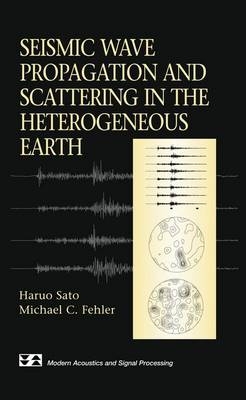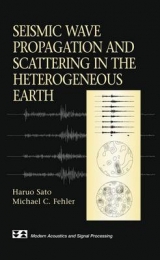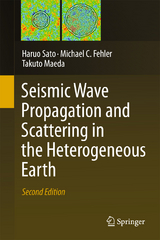Seismic Wave Propagation and Scattering in the Heterogenous Earth
Seiten
2009
|
1., st ed 1997. 2nd printing
Springer Berlin (Verlag)
978-3-540-89622-7 (ISBN)
Springer Berlin (Verlag)
978-3-540-89622-7 (ISBN)
- Titel erscheint in neuer Auflage
- Artikel merken
Zu diesem Artikel existiert eine Nachauflage
This book focuses on recent developments in seismic wave propagation and scattering through the randomly heterogeneous structure of the Earth. It presents a coherent introduction to the theory of scattering in acoustic and elastic materials.
Seismic waves - generated both by natural earthquakes and by man-made sources - have produced an enormous amount of information about the Earth's interior. In classical seismology, the Earth is modeled as a sequence of uniform horizontal layers (or sperical shells) having different elastic properties and one determines these properties from travel times and dispersion of seismic waves. The Earth, however, is not made of horizontally uniform layers, and classic seismic methods can take large-scale inhomogeneities into account. Smaller-scale irregularities, on the other hand, require other methods. Observations of continuous wave trains that follow classic direct S waves, known as coda waves, have shown that there are heterogeneities of random size scattered randomly throughout the layers of the classic seismic model. This book focuses on recent developments in the area of seismic wave propagation and scattering through the randomly heterogeneous structure of the Earth, with emphasis on the lithosphere. The presentation combines information from many sources to present a coherent introduction to the theory of scattering in acoustic and elastic materials and includes analyses of observations using the theoretical methods developed.
Seismic waves - generated both by natural earthquakes and by man-made sources - have produced an enormous amount of information about the Earth's interior. In classical seismology, the Earth is modeled as a sequence of uniform horizontal layers (or sperical shells) having different elastic properties and one determines these properties from travel times and dispersion of seismic waves. The Earth, however, is not made of horizontally uniform layers, and classic seismic methods can take large-scale inhomogeneities into account. Smaller-scale irregularities, on the other hand, require other methods. Observations of continuous wave trains that follow classic direct S waves, known as coda waves, have shown that there are heterogeneities of random size scattered randomly throughout the layers of the classic seismic model. This book focuses on recent developments in the area of seismic wave propagation and scattering through the randomly heterogeneous structure of the Earth, with emphasis on the lithosphere. The presentation combines information from many sources to present a coherent introduction to the theory of scattering in acoustic and elastic materials and includes analyses of observations using the theoretical methods developed.
Introduction.- Heterogeneity in the Lithosphere.- Phenomenological Modeling of Coda Wave.- Excitation Born Approximation for Wave.- Scattering in Inhomogeneous Media.- Attenuation of High-frequency Seismic Waves Synthesis of the Three-component Seismogram Envelopes.- Envelope Synthesis Based on Radiative Transfer.- Theory Broadening of Seismogram Envelopes.- Summary and Epilog.
| Erscheint lt. Verlag | 19.2.2009 |
|---|---|
| Reihe/Serie | Modern Acoustics and Signal Processing |
| Sprache | englisch |
| Maße | 155 x 235 mm |
| Gewicht | 631 g |
| Einbandart | gebunden |
| Themenwelt | Naturwissenschaften ► Geowissenschaften ► Geologie |
| Schlagworte | acoustics • Heterogenous • scattering • Seismic wave propagation |
| ISBN-10 | 3-540-89622-8 / 3540896228 |
| ISBN-13 | 978-3-540-89622-7 / 9783540896227 |
| Zustand | Neuware |
| Haben Sie eine Frage zum Produkt? |
Mehr entdecken
aus dem Bereich
aus dem Bereich





